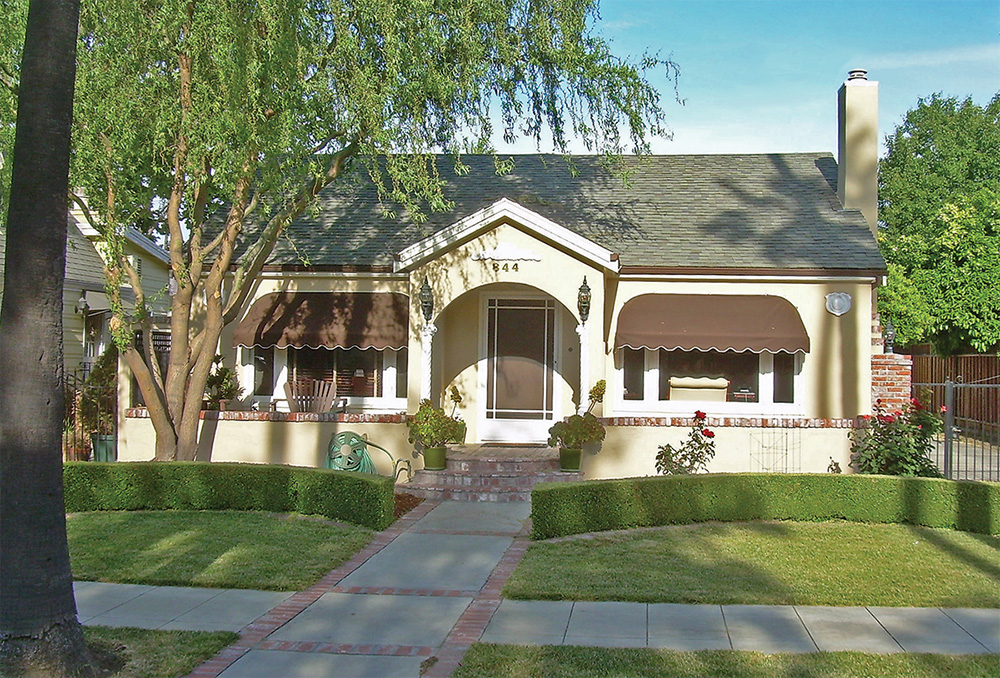
By Pat Keegan and Brad Thiessen
Q: My energy bill was pretty high last summer. Do you have any tips for how to keep comfortable this year without breaking the bank?
A: Absolutely! There are several ways to make your home more comfortable this summer. Some of the solutions are low-cost, while others require a bigger investment. In the end, you can be more comfortable and have lower energy bills this summer.
The first step is to reduce your home’s solar gains – the heat energy it collects from the sun. Since most solar gains originate through your home’s windows, awnings are an effective solution. They can reduce solar heat gain by as much as 65 percent on south-facing windows and 77 percent on west-facing windows. You can also try less expensive solutions on the outside or inside of your windows, like reflective films and solar screens. Heavy window coverings also work and have the added benefit of reducing heat loss in winter.
Two areas that can be major sources of heat gain are skylights and attics. Reflective film or specially designed window coverings are potential solutions for skylights. Attics can become extremely hot and radiate heat through the ceiling into your living space. Abundant venting through the roof, gable or eaves is one solution, but you also need adequate attic insulation.
Another important step is to seal air leaks around windows, doors, plumbing and wiring penetrations to keep warm air out and cool air in.
Excess heat can also be generated inside your home – and at your expense. Here’s a quick list of simple steps you can take:
Make it a habit to turn off lights and TVs in rooms that aren’t in use.
Incandescent light bulbs generate a lot of heat. Replace them with LEDs.
Unplug devices you aren’t using, like chargers, computers, monitors and consumer electronics. Many of these use phantom power that keeps them on constantly (even when they’re not in use!), which generates heat.
Maintain appliances for peak efficiency. For example, clean your refrigerator coils.
Lower your water heater temperature to no higher than 120 degrees Fahrenheit and your refrigerator to no lower than 38 degrees Fahrenheit. Also consider insulating your hot water pipes.
Minimize use of your oven, and don’t run the dishwasher or washing machine until they are full.
Now that you’ve worked on keeping heat out of your home and minimizing the waste heat generated inside, let’s look at how to make the inside air cooler. That starts by assessing your air conditioning (AC) system.
If you have central AC, make sure it’s working efficiently. Replace the filters regularly, and check to see if your supply registers are open. AC systems need to push an adequate amount of air into the supply ductwork to function properly.
If you do not have central AC, window units can be an efficient solution if they are ENERGY STAR®-certified and only used to cool part of the home, part of the time. Make sure to seal any openings around the window unit.
The least expensive way to cool yourself is air movement. A ceiling fan or portable fan can make a room feel up to 10 degrees cooler, but keep in mind, fans cool people. Turn them off when you’re not in the room.
If you live in an area where the night air is cool and not too humid, you can exchange your hot air for cool outdoor air by opening the windows and turning on your kitchen and bath fans. Or you can place a fan in one window to exhaust the warm air and open another window at the opposite end of the house to allow the cooler night air inside. The permanent (but more expensive) option is to install a whole-house fan.
Remember, there are several ways to keep cool and increase comfort. I hope these tips will make your summer more enjoyable than the last!ν
This column was co-written by Pat Keegan and Brad Thiessen of Collaborative Efficiency. For more information on staying comfortable during summer months, visit: www.collaborativeefficiency.com/energytips.
Patrick Keegan writes on consumer and cooperative affairs for the National Rural Electric Cooperative Association, the Arlington, Va.-based service arm of the nation’s 900-plus consumer-owned, not-for-profit electric cooperatives. Write to [email protected] for more information.
ADDITIONAL RESOURCES
For ideas on how to save energy through radiant head that comes in through windows and skylights, see:
energy.gov/energysaver/energy-efficient-window-treatments
energy.gov/energysaver/windows-doors-and-skylights/skylights
To look further into maximizing the efficiency and effectiveness of your AC system, check out these links:
energy.gov/energysaver/room-air-conditioners
www.consumerreports.org/window-air-conditioners/energy-efficient-window-air-conditioners/
energy.gov/energysaver/central-air-conditioning
And for general weatherization tips for all seasons, visit:
www.energystar.gov/index.cfm?c=heat_cool.pr_checklist_consumers




